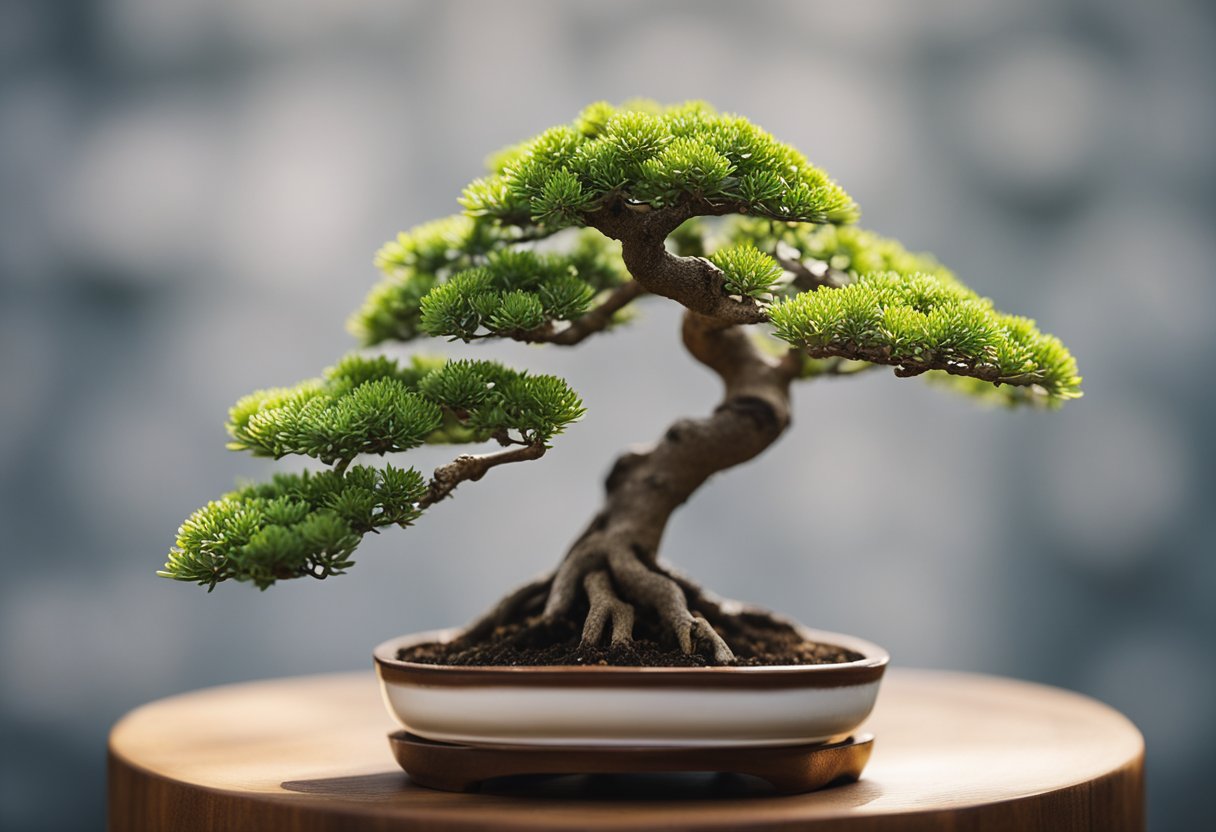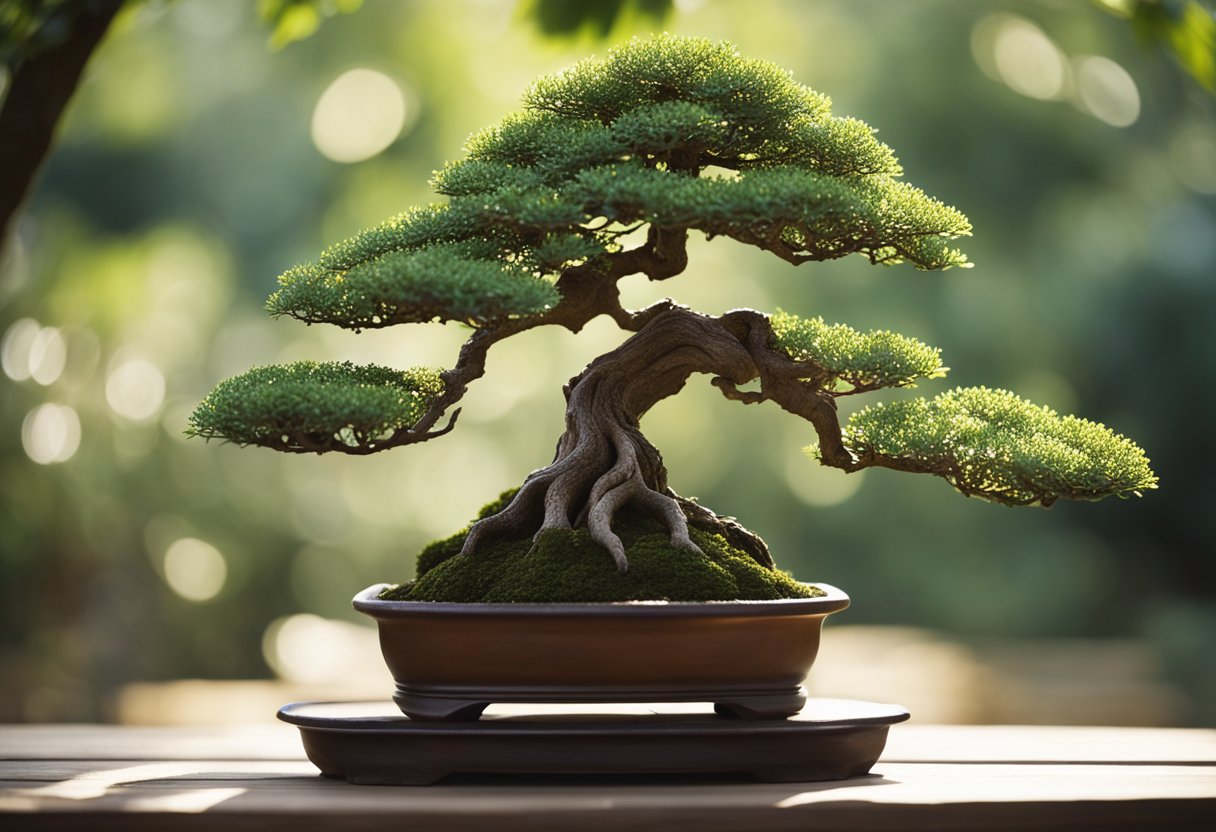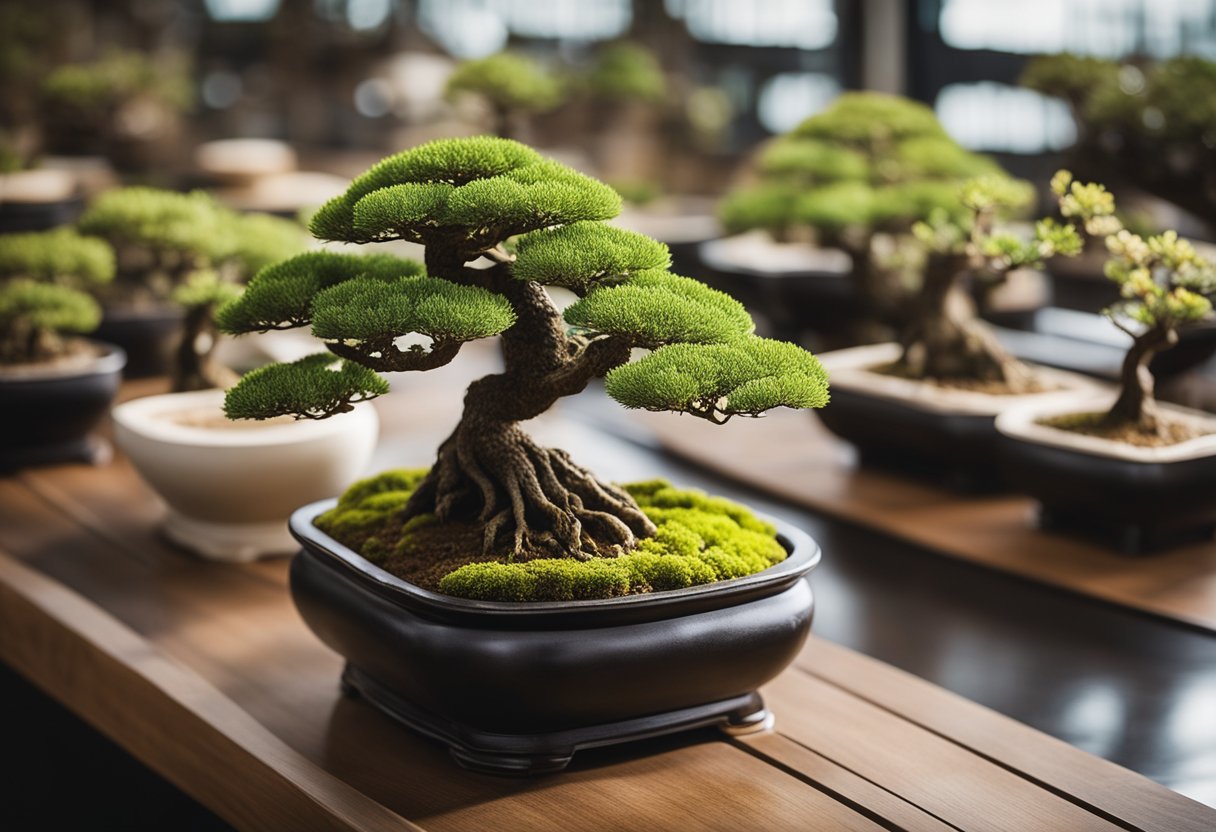What Type of Bonsai Do I Have? A Guide to Identifying Your Bonsai Species
Bonsai trees are miniature versions of full-sized trees that are grown in pots. They are popular among gardeners and enthusiasts alike because of their unique beauty and intricate designs. However, identifying the type of bonsai tree you have can be difficult, especially for beginners. This article will help you identify the species of your bonsai tree in two simple steps.
This post may contain affiliate links, which means I’ll receive a commission if you purchase through my link, at no extra cost to you. Please read full disclosure here.

The first step in identifying your bonsai tree is to examine its foliage. The shape and color of the leaves or needles provide important clues about the tree’s identity. For example, if your bonsai tree has needle-like or scale-like leaves, it is a coniferous tree. On the other hand, if it has broad, flat leaves, it is a deciduous tree.
The second step is to look at the overall structure of the tree. This includes its trunk, branches, and roots. The size and shape of these features can help you determine the species of your bonsai tree. Additionally, you can look for other distinguishing characteristics, such as the color and texture of the bark, the shape of the flowers or fruits, and the overall growth pattern of the tree. With these two steps, you should be able to identify the type of bonsai tree you have and provide it with the proper care it needs to thrive.
Understanding Bonsai Trees

Bonsai trees are miniature trees that are grown in containers and are shaped and pruned to maintain their small size. They are often considered to be works of art and require a lot of care and attention to maintain their beauty.
There are many different types of bonsai trees, each with their own unique characteristics and requirements. Some of the most common tree species used for bonsai include evergreens, deciduous trees, coniferous trees, flowering trees, and fruit trees.
When selecting a type of bonsai tree, it is important to consider the tree’s natural environment and growth habits. Indoor bonsai trees, for example, require different care than outdoor bonsai trees. Evergreen bonsai trees, on the other hand, require a different pruning technique than deciduous bonsai trees.
Research is also important when selecting a type of bonsai tree. Different tree species require different levels of care and maintenance, and it is important to choose a tree that fits with the grower’s level of experience and available time.
Overall, understanding the different types of bonsai trees and their unique characteristics is key to successfully growing and maintaining these beautiful miniature trees.
Identifying Bonsai Tree Types

Bonsai trees are known for their beauty and elegance, and they come in different types. Identifying the type of bonsai tree you have can be a bit tricky, but it’s essential to know the species to take proper care of it. Here are some ways to identify the type of bonsai tree you have:
By Leaf Type
One way to identify the type of bonsai tree you have is by examining its leaves. Bonsai trees come in different leaf shapes, sizes, and colors. Some bonsai trees have needle-like leaves, while others have broad leaves. The leaves of a bonsai tree can be green, red, yellow, or orange, and they can change color depending on the season.
By Flower and Fruit Type
Another way to identify the type of bonsai tree you have is by examining its flowers and fruits. Some bonsai trees produce white flowers, while others produce berries. Azaleas, for example, are known for their beautiful pink and white flowers. Fruit trees, such as apple and cherry trees, are also popular choices for bonsai.
By Bark and Trunk Type
Bonsai trees have different types of bark and trunks. Some bonsai trees have smooth bark, while others have rough bark. The trunk of a bonsai tree can be thick or thin, and it can have different shapes and sizes. The Japanese maple, for example, has a distinctive bark that peels away in layers.
By Growth Pattern
Bonsai trees also have different growth patterns. Some bonsai trees have a compact growth pattern, while others have a more open growth pattern. Pine, juniper, and fir trees are examples of bonsai trees with a compact growth pattern, while maple and elm trees have a more open growth pattern.
By Species
Identifying the species of your bonsai tree is essential to take proper care of it. Some of the most popular species for bonsai trees include azalea, Japanese maple, ficus, oak, spruce, cedar, cypress, beech, wisteria, boxwood, bougainvillea, larch, ginkgo, magnolia, Japanese black pine, Chinese elm, rhododendron, Hawaiian umbrella, dwarf jade, and snow rose.
By Climate
The climate and environment in which a bonsai tree grows can also help identify its type. Indoor bonsai trees typically require subtropical or tropical climates, while outdoor bonsai trees can withstand different types of weather conditions.
By Color and Leaf Arrangement
Finally, the color and leaf arrangement of a bonsai tree can also help identify its type. Bonsai trees can have opposite, alternate, spiral, or whorled leaf arrangements. The color of the leaves can also vary depending on the species.
In conclusion, identifying the type of bonsai tree you have is essential to take proper care of it. By examining its leaves, flowers, fruits, bark, trunk, growth pattern, species, climate, color, and leaf arrangement, you can determine the type of bonsai tree you have.
Caring for Your Bonsai Tree
Bonsai trees are delicate and require proper care to thrive. Here are some tips on how to care for your bonsai tree:
Watering and Humidity
Watering is an essential part of bonsai tree care. It is important to keep the soil moist but not waterlogged. Overwatering can lead to root rot, while underwatering can cause the tree to dry out. The frequency of watering depends on the species of the tree, the size of the pot, and the humidity of the environment. It is recommended to water the tree when the top layer of soil feels dry to the touch.
Humidity is also important for bonsai trees. Most species prefer a humid environment, so it is recommended to mist the tree regularly or keep a tray of water near the tree to increase humidity levels.
Soil and Fertilizer
The soil used for bonsai trees should be well-draining and have good aeration. It is recommended to use a mix of akadama, pumice, and lava rock. Fertilizer is also important for the health of the tree. It is recommended to use a balanced fertilizer during the growing season and a low-nitrogen fertilizer during the dormant season.
Sunlight and Temperature
Bonsai trees require adequate sunlight to grow and thrive. Most species prefer bright, indirect sunlight, while some species can tolerate full sun. It is important to avoid exposing the tree to extreme temperatures or sudden changes in temperature, as this can harm the tree.
Pruning and Maintenance
Pruning is an essential part of bonsai tree care. It helps to maintain the shape and size of the tree and encourages new growth. It is recommended to prune the tree during the growing season and to remove any dead or damaged branches.
Regular maintenance is also important for the health of the tree. This includes repotting the tree every 2-3 years, removing any weeds or moss, and checking for pests or diseases.
Common Bonsai Tree Problems
Bonsai trees can be susceptible to pests and diseases. Some common problems include spider mites, scale insects, and root rot. It is important to regularly inspect the tree for any signs of pests or diseases and to take action immediately if any are found.
In conclusion, proper care is essential for the health and longevity of your bonsai tree. By following these tips, you can ensure that your tree thrives and remains a beautiful addition to your home or garden.
Bonsai Tree Styles and Aesthetics
Bonsai tree styles are categorized based on the shape and form of the tree. Each style has its own unique characteristics and aesthetics. Some of the most common bonsai tree styles include formal upright, informal upright, slanting, cascade, semi-cascade, and literati.
The formal upright style is characterized by a straight trunk with a tapered top and symmetrical branches. The trunk is thicker at the bottom and gradually tapers towards the top. The branches are arranged in a regular pattern, with the lower branches being longer than the upper branches. This style is ideal for trees that have a strong, upright growth habit, such as pines and junipers.
The informal upright style is similar to the formal upright style, but with a more natural and asymmetrical appearance. The trunk may be slightly curved or twisted, and the branches are not arranged in a regular pattern. This style is ideal for trees that have a more natural growth habit, such as maples and elms.
The slanting style is characterized by a trunk that leans to one side. The first branch grows in the opposite direction of the slant of the tree, and the lower branches are arranged in groups of three. This style is ideal for trees that have a natural slanting growth habit, such as cedars and junipers.
The cascade style is characterized by a trunk that cascades downwards, with the branches and foliage hanging below the pot. This style is ideal for trees that have a natural cascading growth habit, such as pines and maples.
The semi-cascade style is similar to the cascade style, but with a less pronounced downward slope. The branches and foliage still hang below the pot, but not as much as in the cascade style. This style is ideal for trees that have a semi-cascading growth habit, such as azaleas and camellias.
The literati style is characterized by a trunk that is thin and twisted, with sparse foliage. The branches are arranged in an irregular pattern, and the tree has a windswept appearance. This style is ideal for trees that have a sparse growth habit, such as junipers and pines.
In addition to the style of the tree, bonsai aesthetics also play an important role in the overall appearance of the tree. Aesthetics such as balance, proportion, and harmony are important considerations when designing a bonsai tree. The pot, soil, and accessories used to display the tree also contribute to its overall aesthetics.
Overall, the style and aesthetics of a bonsai tree are important factors to consider when identifying and caring for a bonsai tree. By understanding the different styles and aesthetics, bonsai enthusiasts can create beautiful and unique trees that reflect their personal style and preferences.
Bonsai Trees for Beginners
Bonsai trees are known for their beauty and elegance. They are miniature trees that require special care and attention. For beginners, it can be challenging to choose the right bonsai tree. There are many different types of bonsai trees, each with its own unique characteristics. Here are some of the best bonsai trees for beginners.
Jade Bonsai
Jade bonsai is an excellent choice for beginners. It is a hardy plant that can survive in a variety of conditions. It has thick, shiny leaves and a thick trunk that gives it a unique appearance. Jade bonsai is easy to care for and can be grown both indoors and outdoors.
Chinese Elm Bonsai
Chinese Elm bonsai is another great choice for beginners. It is a fast-growing plant that is easy to care for. Chinese Elm bonsai has small, serrated leaves and a distinctive bark that gives it a unique appearance. It is a hardy plant that can survive in a variety of conditions.
Azalea Bonsai
Azalea bonsai is a beautiful plant that produces stunning flowers. It is a bit more challenging to care for than other bonsai trees, but it is well worth the effort. Azalea bonsai has small, delicate leaves and produces flowers in shades of pink, white, and red.
Ficus Bonsai
Ficus bonsai is a popular choice for beginners. It is a hardy plant that can survive in a variety of conditions. Ficus bonsai has small, shiny leaves and a thick trunk that gives it a unique appearance. It is easy to care for and can be grown both indoors and outdoors.
Pine Bonsai
Pine bonsai is a unique plant that requires a bit more care than other bonsai trees. It has long, needle-like leaves and a distinctive bark that gives it a unique appearance. Pine bonsai is a hardy plant that can survive in a variety of conditions.
Juniper Bonsai
Juniper bonsai is a popular choice for beginners. It is a hardy plant that can survive in a variety of conditions. Juniper bonsai has small, needle-like leaves and a distinctive bark that gives it a unique appearance. It is easy to care for and can be grown both indoors and outdoors.
Maple Bonsai
Maple bonsai is a beautiful plant that produces stunning leaves in shades of red, orange, and yellow. It is a bit more challenging to care for than other bonsai trees, but it is well worth the effort. Maple bonsai has small, delicate leaves and a distinctive bark that gives it a unique appearance.
In conclusion, there are many different types of bonsai trees for beginners to choose from. Each type has its own unique characteristics, and it’s important to choose a plant that suits your needs and preferences. With a bit of care and attention, bonsai trees can be a beautiful addition to any home or garden.
Conclusion
In conclusion, identifying the type of bonsai tree one has is essential to providing the right care and maintenance. The first step in identifying a bonsai tree is to examine its foliage, bark, and size. The provided search results offer a comprehensive guide to identifying different types of bonsai trees.
Once the type of bonsai tree has been identified, it is important to understand its specific care needs. For example, deciduous bonsai varieties require different care than evergreen bonsai varieties. Flowering bonsai varieties also have unique care requirements.
Caring for a bonsai tree involves regular watering, pruning, and fertilization. It is important to provide the right amount of sunlight and temperature for the specific type of bonsai tree.
Overall, identifying the type of bonsai tree one has and providing the right care is crucial to maintaining a healthy and beautiful bonsai tree. With the help of the provided search results and proper care, anyone can enjoy the beauty of a bonsai tree in their home or garden.